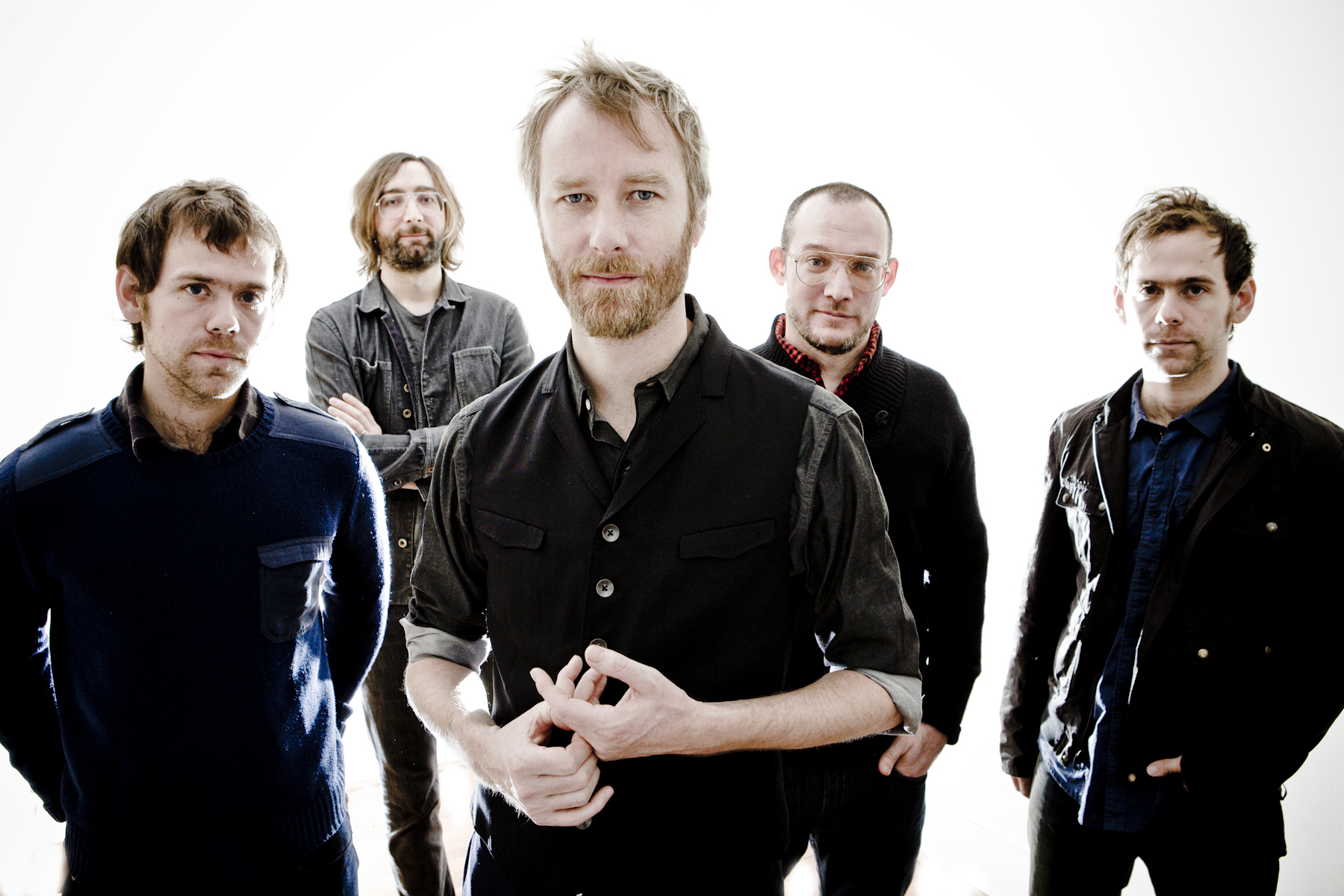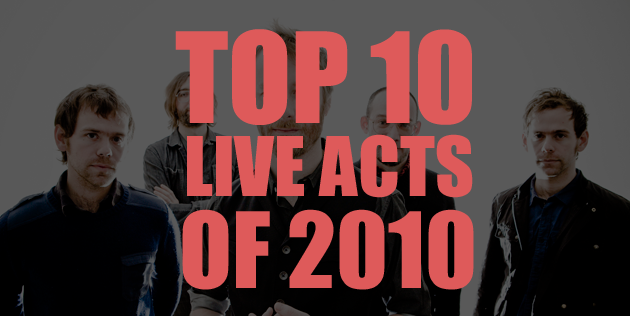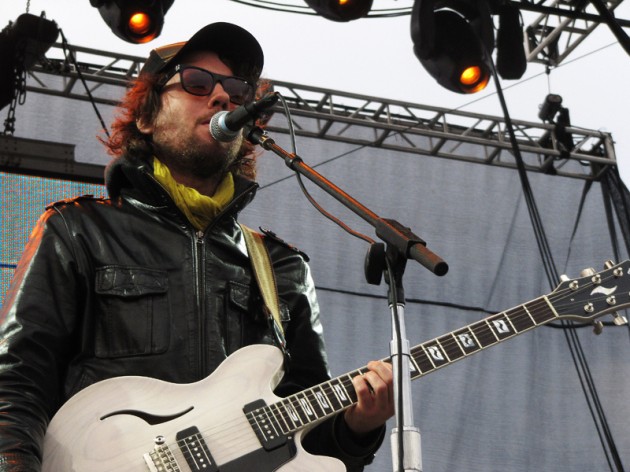Arcade Fire
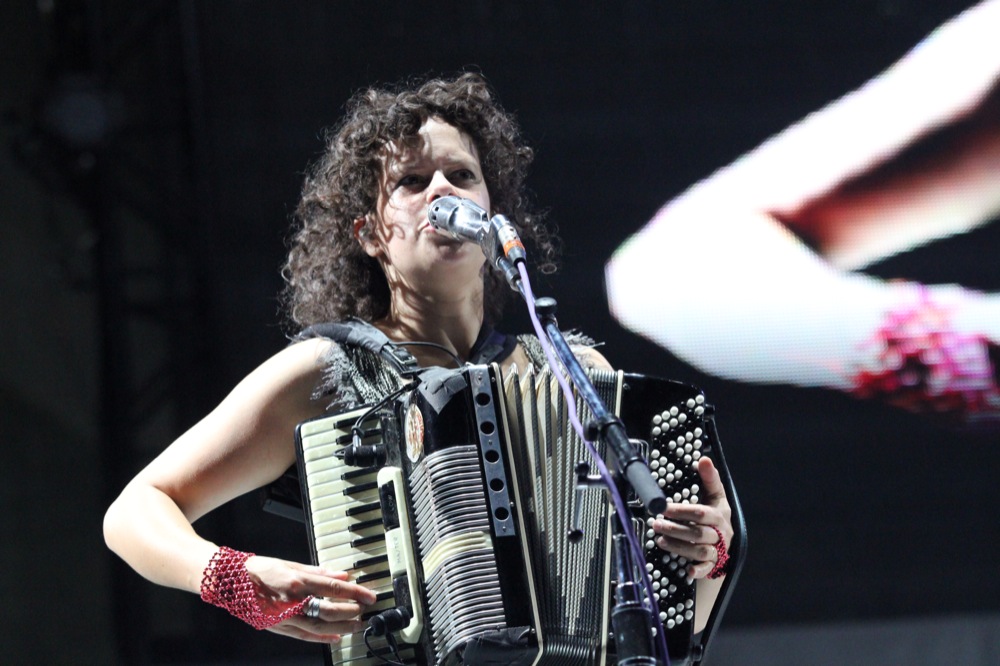
Photo by Max Blau
Nestled cozily on a Montreal, QC CA corner is a community center called the Notman House, named after well-known Canadian photographer William Notman. It was within a small room of this house that the seven members of Arcade Fire stood in front of about 75 lucky Canadians to perform a dozen songs in preparation for their tour to support their third full length, The Suburbs. It wasn’t the mere reemergence that made this performance so notable, but the fact that the setting was so resoundingly ordinary; the walls that encircled them were of an especially plain white; the lighting was essentially kept to a few strings idly dressed over amps and mic stands; the instruments were kept to a standard fare and lacked the familiar Arcade Fire spices, such as an accordion or a hurdy gurdy – a true rehearsal. Yet despite the conservative aesthetics, this was still, unconditionally, an Arcade Fire show because no other band around today puts in as much emotional energy on stage as this group does. And even without a sea of people to the horizon in front of them, they still had no problem pretending they were each alone and getting lost in their own music as they did during that initial performance in early June.
I was able to catch them on the Northeast leg of their tour at the Mann Center in Philadelphia during the first week of August. Through a set list of mostly Funeral and Suburbs tracks, this was that Notman show on a bigger stage, with brighter lights, and a lot more people – the energy still overflowed the barrier and flooded a crowd eager to drown just the same. From a Montreal parking lot to MSG, to the Daily Show and Jools Holland, Arcade Fire took their widescreen music to just about every possible venue in 2010, and played each one with the familiar fervor that has helped to crown them as one of the best live acts of the last ten years.
– Anthony Matarese
Atoms For Peace

Photo by Christopher Alvarez
In the long, ignoble history of Radioheadology, 2010 will go down as the year that Thom Yorke finally like, chilled out. Those who had the opportunity to see the man live over the year saw a man who was more relaxed and playful than the paranoid android we all thought we knew. Nowhere was this more apparent than in the handful of Atoms For Peace shows Thom played with an ad-hoc band made up of members from Red Hot Chili Peppers, Beck’s band, and others. Think about it for a second: this is Thom Yorke playing with Flea. It’s something that would have been unthinkable a couple years ago, but, as it turns out, it was a great opportunity to see Yorke in a striking new context (the handful of new Radiohead songs and Joy Division covers he played were a nice bonus, as well). Atoms For Peace might not hit quite as hard as Thom’s other band, but, they have a spontaneous appeal all their own.
– Matthew Lingo
Broken Social Scene
There are five aspects that make Broken Social Scene a perfect live act: they are tight, they are loud, they enjoy themselves, they know their audience and their songs are better live than on record. It’s not often that you see a band so full of energy every single time they play, but Broken Social Scene challenge themselves to keep it interesting and at the same time enthral the audience. They’ll casually switch instruments between songs, or when playing the same song on successive nights allow each member to play a different instrument to the one they played the prior evening. They’re also not afraid to throw in any song from their discography to the set. The band’s between-song chatter either with the crowd or intra-band is always enjoyable and if that doesn’t make you believe that they’re having a good time then the visible connection between the members and the mock-theatrics whilst they’re playing is all you need to see to convince you.
– Rob Hakimian
Gorillaz

Photo by Rob Hakimian
When Damon Albarn performed live with Gorillaz promoting 2005’s Demon Days, he hid the band behind a curtain and emphasized the project’s cartoon persona. This year, he took the opposite approach. 2010’s stellar Plastic Beach was a diverse effort, heavy on guests ranging from Snoop Dogg to Bobby Womack, and many of these guests appeared live regularly with Albarn. The former Blur guitarist and his powerhouse band (which included the Clash’s Paul Simonon and Mick Jones) brought to life not only Plastic Beach tracks but also fan favorites from the group’s back catalog.
– Sean Highkin
LCD Soundsystem
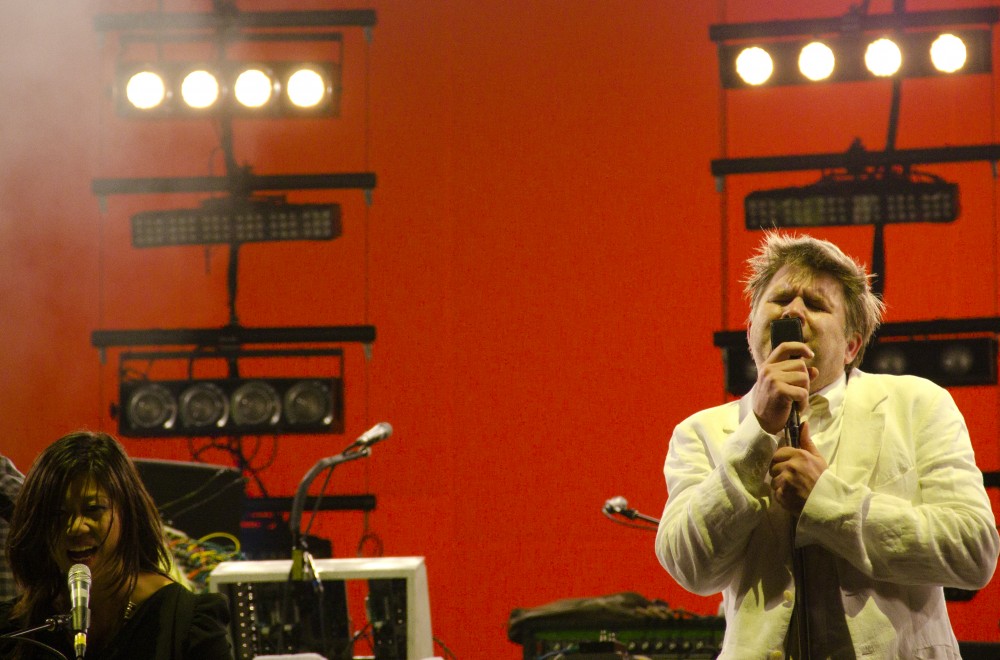
Photo by Philip Cosores
It seems like I was the last person in the world to see LCD Soundsystem, and indeed by the time they played the show of their life at the Hollywood Bowl in mid-October, they had already sub-headlined Coachella, played Bonaroo, Pitchfork, ACL, Sasquatch, and multiple legs of moderate-sized headlining dates. Critics complained that there was too little setlist variation, but then the band went and made a new setlist for their last run of the year, rumored to be their last ever. And while I could compliment the achievement of performing electronic songs that James Murphy records primarily by himself with live musician rather than reliance on computers, what remains memorable about LCD’s live show is the better understanding of James Murphy as an artist, how he has combined the DJ and rock star into one and given people the combined experience of the rave and the show. There are not many songs you can both dance to and sing along to, or at least not many with words worth repeating, but this is what Murphy sells. Sure, I feel like I missed out by waiting so long to hear “All My Friends” live, but the LCD Soundsystem of 2010 wouldn’t allow me to regret anything after that October night, when a usually well-behaved and docile Hollywood crowd stood from start to finish, a site I would be surprised to see repeated at the Bowl.
– Philip Cosores
The National

Photo by Max Blau
The National’s grasp of dynamics is clear in their studio output, though their quieter moments are often derided as boring by their critics. I had this in mind as I noted their choice to open with “Runaway,” a slow brooder from this year’s astounding High Violet. As it was my first time seeing them I wasn’t sure whether the night would hold in store the sort of tepidity on display in those opening moments, but I was certainly wrong to even entertain the thought. The intensity of the more driving songs like “Anyone’s Ghost” was enough to get the surprisingly middle-aged crowd rocking. More familiar songs were met with rapturous applause and the earlier brooders like “Daughters of the Soho Riots” were met with rapt attention. It was jaw-dropping to the closing moments. When Owen Pallett took to the stage again, I knew that something special was ahead, and we were treated to an entirely acoustic version of “Vanderlyle Crybaby Geeks.” I can’t really fully describe the mixture of emotions that the moment inspired. The newly microphone-less Matt Berninger was able to silence the crowd completely until the chorus came in. If this was “boring,” I don’t know if I’m ready for excitement.
– Colin Joyce
Pavement

Photo by Philip Cosores
I was lucky enough to see Pavement twice this year, their first American reunion date in Pomona, and their last one in Las Vegas. As an avid fan, dating back to an impulse buy at a Houston Blockbuster Music in 1996, these shows were the fulfillment of many conversations, debates and fantasies. Hell, The National even sing about wanting Pavement to get back together. And though the enthusiasm died for many by the time they were headlining solo shows in September, Pavement used 2010 to remind people of one thing: they were good. I’m not talking about professionally, or about how good of musicians they are. No, Pavement were good at being a band, of having presence and, most importantly, they were good at creating interesting, fun and often beautiful music. Pavement was never popular because they were cool, Pavement’s success hinged on their music and their live shows this year were not as exciting visually or even sonically. They were amazing in that the songs were being played at all, that the songs even existed in the first place. And though Stephen Malkmus never seemed to want rock stardom, look at the setlists for this tour and tell me he wouldn’t have been great at it.
– Philip Cosores
Phoenix
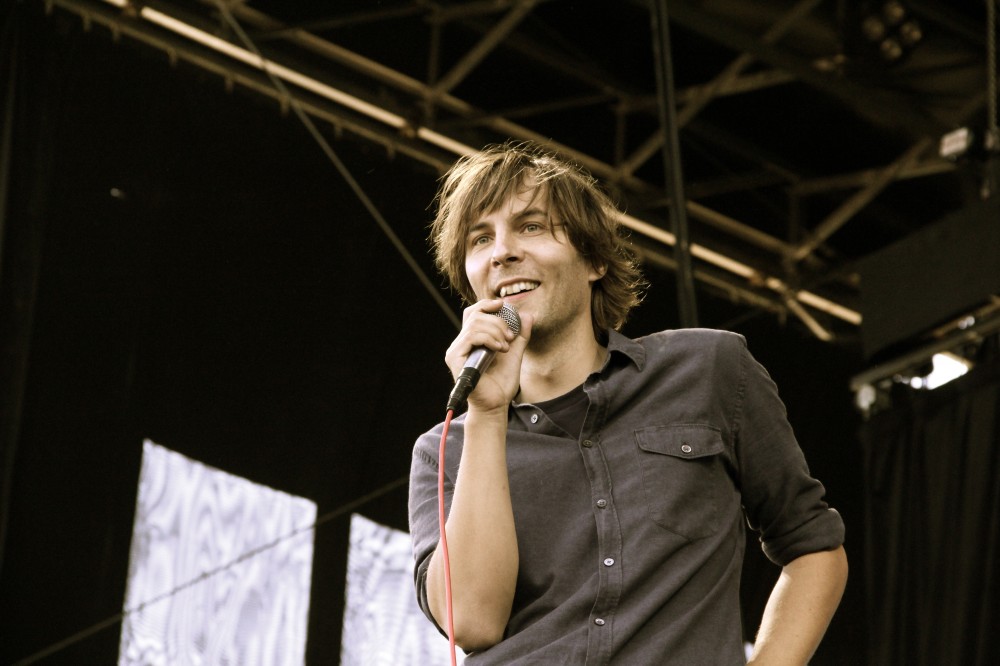
Photo by Philip Cosores
I saw Phoenix live twice this year and I’m pretty sure they played the same setlist at both shows. But this didn’t bother me one bit. It’s been more than a year since Wolfgang Amadeus Phoenix dropped and those hooks are still insanely infectious. And I know I’m not the only one because everyone around me lost their shit when that keyboard riff on “Lisztomania” started. Usually I’m not huge on boisterous crowds at gigs but when Phoenix are playing I’m entirely part of the crowd, jumping about like a kid hearing they are going to Disneyland, singing along to every word all while trying to bust a move or two.
I can’t help but think the main reason that everyone is in such a good mood is because the band are loving what they are doing on stage. Each riff and melody sounds excitable and vibrant live even though you’d expect them to sound a little tedious from the fact they’ve probably played these songs hundreds (if not thousands) of times. Admittedly I didn’t jump at the chance of seeing Phoenix for the second time as I thought things would be much the same, but then I realised that that in itself is a great draw. Once you’ve experienced the joy of Phoenix live, why would you shy away from another dose of the same stuff again?
– Ray Finlayson
Titus Andronicus
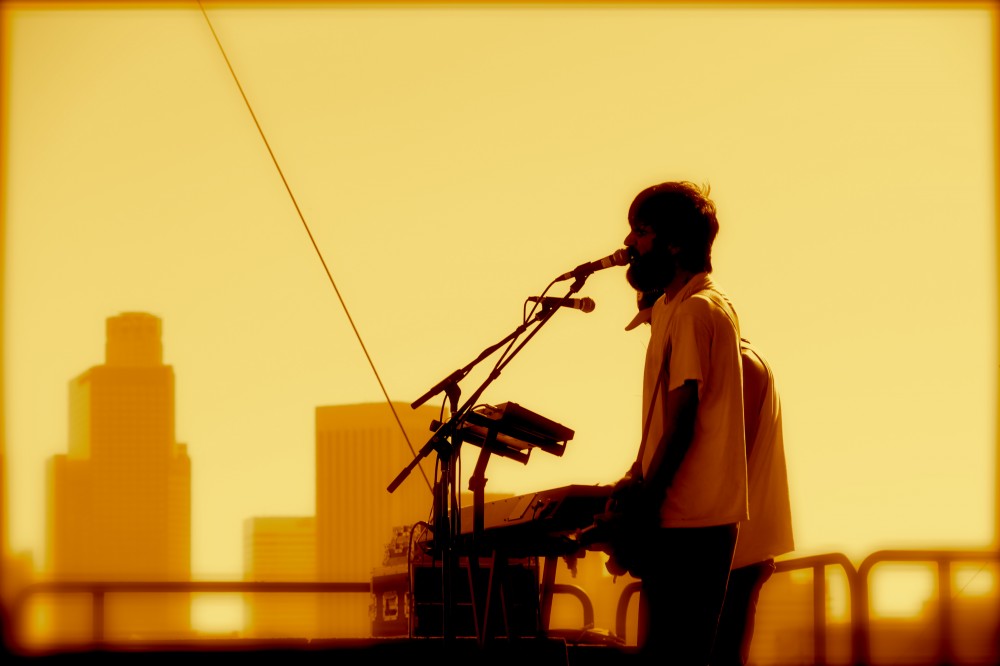
Photo by Philip Cosores
Titus Andronicus’ recorded music promises many things of the live act; that it’ll be raucous, passionate, spirited and overall fun, and undoubtedly Titus Andronicus consistently deliver. The punk spirit that goes into the making of their music is fully exorcised when the band is onstage, with every member bouncing along to the driving guitars, particularly singer Patrick Stickles who will throw himself around the stage and, should the mood strike him, right off of it and into the crowd. The best moments live are the huge sing-alongs in numbers such as “Titus Andronicus,” “Titus Andronicus Forever” and “Four Score and Seven” to name a few. In fact they’re less “sing-alongs” and more “scream-alongs” and that’s only if you have the breath left within you to do so as you get swept up in the emotional and transcendent musical attack being provided by the band.
– Rob Hakimian
Yeasayer
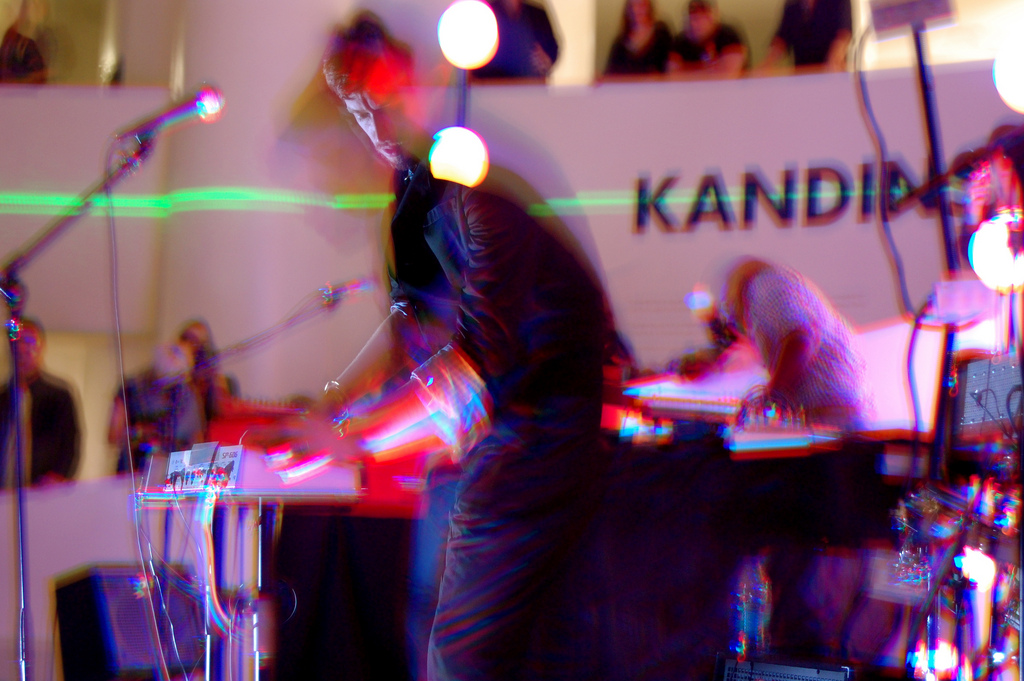
Photo by Allise Hewes
The change in sound between Yeasayer’s first and second albums was one of the most surprising revelations of the year. Seeing them perform live though will help you to understand the connection between the more organic sound of All Hour Cymbals and the dancier, more electronic Odd Blood. The rhythm section come into their own in the live setting; Ira Tuton’s bass fueling the music while the drums tribally lead the crowd’s bodies in an irresistible motion. They have pretty much their whole (admittedly, small) discography at their disposal, including non-album gem “Tightrope,” so the band are capable of manipulating the tone and pace at any point in their set to mold it into an utterly enjoyable show.
– Rob Hakimian

